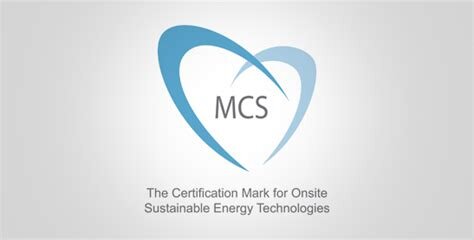Your Guide to Solar PV
So called Solar PV Installations are a key strategy in moving our built assets to a Net Zero Carbon economy. In this article we outline all of the design considerations to be undertaken when proposing to install a Photovoltaic System to your home or commercial property. Understanding the design parameters, costs, funding and procurement options available is important for any client wishing to consider the installation of such a system.
Context
Given the UK's commitment to reaching Net Zero Carbon by 2040, and Scotland's commitment to 2035, increasingly we are having to consider greener ways of meeting our energy requirements. Photovoltaic panels are a renewable technology that generate electricity by harnessing the power of the sun. In our drive to a low carbon economy, these systems help to meet our increasing demand for electrical power in the electrification of transport, powering renewable heating systems such as air source heat pumps, replacing high carbon alternatives such as gas, coal and oil.
How they work
As a technology, solar cells have been around since the 1950s. Put simply, the silicon cells absorb light from the sun and convert it to electricity. By placing a connection at either end of the cell you can then collect the resulting current and use it to power your energy needs. The cells are bunched together to form modules. A typical module will have two thin layers of silicon treated in slightly different ways. The top layer has unstable atoms that are 'excited' when light hits them, causing them to lose electrons. These unstable electrons are then attracted to the bottom layer of silicon. Movement of electrons between the two silicon layers causes a current, and when harnessed by two metal conductors above and below, a circuit is born and you can harness electrical energy.
The current created is DC current, unusable for our domestic needs. An Inverter is therefore required to change the DC current to AC current. This is a very important part of your PV system. Considered a 'moving part' inverters are the only part of the system that will require regular replacement during the 25 year life span of the system, typically every 10 years or so. Ensure that your installer provides a high quality inverter in order to optimise efficiency and keep replacement costs to a minimum. Most inverters installed in PV Systems are string inverters; suitable for arrays where all panels operate under the same lighting conditions. The disadvantage of these, is that if one panel is in shade, it will knock out the entire array. Efficiency is therefore compromised. Micro Inverters by contrast, are installed in arrays that have varied light conditions to each panel. Attached directly to each panel, they monitor the output of the individual panel, so that if one panel is dirty or shaded, it allows the other panels to operate normally. Micro inverters are slightly more expensive, but have a longer life-span of 15-25 years.
Planning
The good news is that generally speaking, as long as you do not live in a Conservation Area or a Listed Building, you do not require Planning Permission for the installation of your PV System. If you are in a Conservation Area and/ or a Listed Building, Listed Building consent will be required.
Orientation
Most areas in the UK are suitable for a PV Installation. Contrary to popular belief, the array does not require direct sunlight, they still work on cloudy days. Levels of sunlight will affect the efficiency of the system and levels of generation. These can be checked at http://www.metoffice.gov.uk/renewables/solar which offers a very useful solar irradiation map of the UK.
To optimise the efficiency of the system, you must also locate it such that it is not overshadowed by adjacent buildings, structures or vegetation. Consider different times of the year also as low sun angles during winter can be significant. Optimal orientation is an unobstructed south facing roof with an inclination of 30 degrees from horizontal, but not essential. The output of arrays on south-east or south-west facing roofs may be 10% lower than those that are south facing. East and West facing roofs can result in a 20% drop in efficiency of the system.
The Energy Savings Trust has a useful roof orientation and tilt table which shows the approximate system efficiencies on their website http://www.energysavingtrust.org.uk
Size of system
The Energy Savings Trust estimates that the average 3 bed UK home uses around 3kwh of electrical power annually. In order to meet this energy demand a 4kW solar array would have to be installed, which produces around 3,400 kWh of electricity annually. Generally speaking each panel on a domestic system will produce 250kW of power annually, so a 16 panel system can be enough to power an entire home for a family of 4 for a year. Not every roof of course is the same size. I 1kw system (4 panels) will produce 850kWh/ year; a 2kw system (8 panels) 1700kWh/ year and a 3kW system (12 panels) 2700 kWh/ year.
Costs/ Investment return
At time of writing (Feb 2021) the average cost of an installed system is as follows;
1kW System - £2500 - £3000
2kW System - £3000 - £4000
3kW System - £4000 - £6000
4kW System - £6000 - £8000
In terms of investment return, this is very difficult to assess, as it is dependent on a number of things, not least of which is the efficiency of your system and how much energy it is able to generate. Firstly, any energy that is generated and that you use is of course saving you money in your electrical bill. This saving is dependent upon what you pay for your electricity. Any surplus energy is then exported back to the grid. The government has set up a scheme whereby micro scale energy producers are paid by their energy provider for the energy that they export back to the grid. Named the Smart Export Guarantee, this scheme aims to generate a competitive market where energy producers will compete for your exported energy by offering incentivised rates to buy back your surplus energy. Rates vary wildly, but there are new players coming to the market such as Bulb Energy, who are offering disruptive rates at around 5.38p per kWh.
The Energy Savings Trust has a very useful calculator that can determine cost, energy generated and return on investment for any size of array based on your exact location. Check it out at https://energysavingtrust.org.uk/tool/solar-energy-calculator/
MCS accreditation
Solar PV systems can be very complex to install. In order to ensure that your system is installed by a reputable company, you must ensure that the installer is MCS Accredited. MCS certifies low-carbon products and installations used to produce electricity and heat from renewable sources. MCS is a standards organisation, creating and maintain standards that allows for the certification of products, installers and their installations. Indeed, to benefit from the many grants available and the Smart Export Guarantee, your system must be installed and maintained by an MCS Certified company. In short, MCS Accreditation gives the Consumer reassurance that their system is appropriate and compliant with current standards.
As we increasingly drive towards a net zero carbon economy, the prevalence of solar pv is increasing. As the market has developed the cost of installation is falling all of the time, whilst the efficiency of the technology is increasing. Systems are becoming increasingly innovative with smart inverters that track when you use your energy to optimise the efficiency of the system, to roof tiles that have solar cells built into them. The market for paying consumers for the energy that they don't use is beginning to become competitive, offering consumers real choice in who they should partner with. It all points to a very positive future where we can expect now to install systems that will at the very least supply the majority of our electrical energy requirements for our home. At Novo, when designing our energy efficient and Passivhaus compliant homes, we regularly consider optimising the use of Solar PV into the energy strategy of the design. Should you require any assistance in deciding whether Solar PV is right for you, please just get in touch by clicking on the button below.





